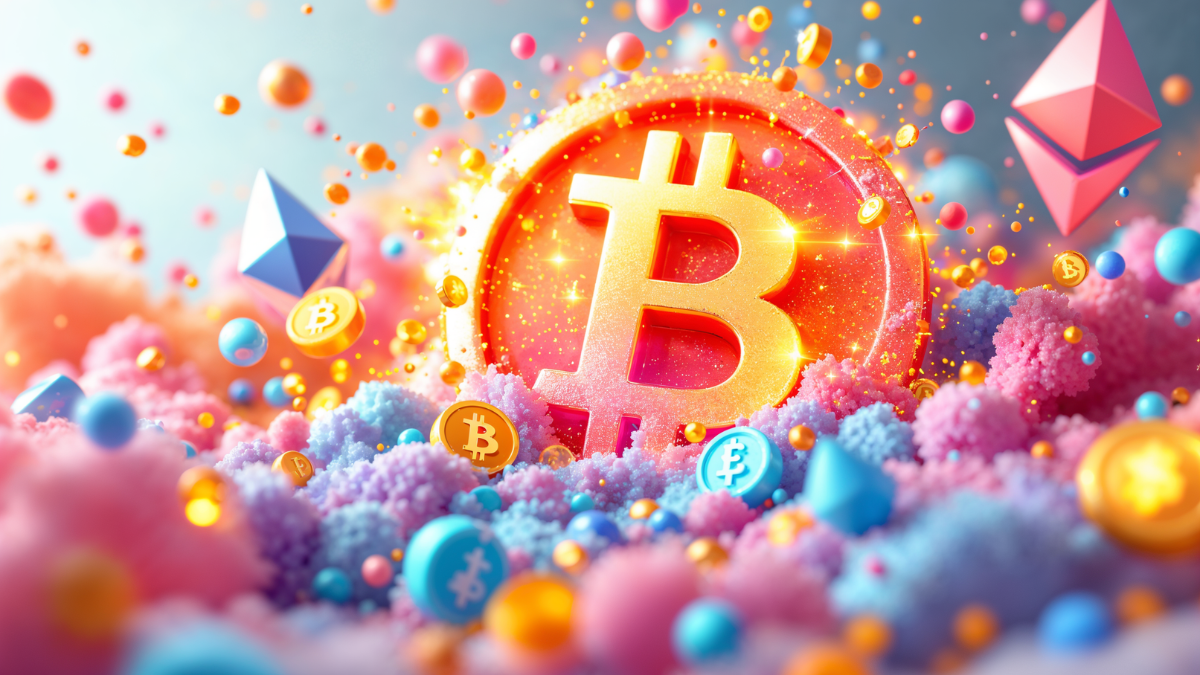
Ethereum’s DEX market experienced an explosion of trading activity as daily volume skyrocketed to $8.48 billion on February 3, an amount that we haven’t seen since March 12, 2023. And why, you might ask, was our beloved DEX market so active on that February day? Well, it just so happens that the whole crypto market was either shaking or quaking—fluctuating quite nicely, in any case—and this was in turn propelling not just on-chain transactions but also our trusty DEX market toward ever higher trading volumes. Uniswap held 65.78% of the total trading volume on that day. According to DeFiLlama, Ethereum DEX trading volume reached $8.48 billion during the big fluctuation on February 3, the highest point since March 12, 2023, with Uniswap accounting for 65.78%. However, Ethereum DEX is still lower than Solana DEX`s daily trading volume of $9.56… — Wu Blockchain (@WuBlockchain) February 4, 2025 Even with this robust showing, Ethereum’s decentralized exchange trading volume was left behind by Solana, which on the same day put up a figure of $9.56 billion. The competition between the two networks is intensifying, and Solana’s low fees and rapid processing times seem to be drawing more traders to its side. In another development, validators of Ethereum gave their nod to a gas limit increase on the Ethereum network, taking it beyond 30 million gas units for the first time under the proof-of-stake (PoS) consensus mechanism. To be precise, more than half of Ethereum’s validators had to give the go-ahead for this change. And what change? The first adjustment of its kind since 2021 took the gas limit from a solid 30 million units to an ethereal 30-plus million gas unit realm. Ethereum increased the network’s gas limit above 30 million, with over 50% of validators indicating the change. More than half of the validators’ approval was needed for the gas limit adjustment to take effect. This is the first time such a change has been implemented under… — Wu Blockchain (@WuBlockchain) February 4, 2025 Ethereum DEX Trading Rebounds, But Solana Maintains an Edge Increased market volatility has pushed traders to transact much more aggressively, and this newfound aggression has made its way to DEXs built on Ethereum. Even so, Solana managed to outpace Ethereum: Its DEXs recorded a daily trading volume of $9.56 billion, compared to $8.48 billion for DEXs built on Ethereum. DeFi is still largely an Ethereum phenomenon, with Uniswap as a core piece. But, of late, Solana has been dominating in daily DEX volume, and this installment in our series on Solana’s DeFi moment will try to make sense of what, exactly, is going on with this alternative to Ethereum. In the last 12 months, Solana has gained substantial momentum among traders and liquidity providers, making it a serious competitor to Ethereum. Although Ethereum is a much more decentralized and secure network, Solana’s quick processing times and low fees have made it a darling of the high-frequency trading and institutional investor crowd. Ethereum’s Gas Limit Adjustment: A Major Shift in Network Dynamics Accompanying the increase in trading volume, Ethereum validators signed off on a gas limit increase to beyond 30 million units. This action, which required more than 50% consensus among validators, is a giant step in Ethereum’s evolution under the Proof-of-Stake model. The amount of computational power the Ethereum network can process in a single block is dictated by the gas limit. When you raise the gas limit, the network can process more transactions in a single block. That means it can potentially reduce congestion and overall network inefficiency. The most recent adjustment to Ethereum’s gas limit took place in 2021 and saw the figure raised from 15 million to 30 million units. At that time, the network was still operating under the proof-of-work (PoW) system, where governance was largely in the hands of miners. Today, the shift has occurred to proof-of-stake (PoS), and governance now is in the hands of validators, who must collectively approve any changes to network parameters. Even though increasing the gas limit could improve Ethereum’s scalability, it also brings difficulties. Block size could push more work onto validators and full nodes, increasing the number of transactions that need to be dealt with and — you guessed it — storage and processing power. If the critics are right, and that happens, then could Ethereum’s scalability solutions become part of a centralization problem? Even though there are worries about the changes, the validator community for Ethereum largely backed the adjustment, showing that there really is a unified effort among validators to make the network work better. This decision fits into a larger set of potential upgrades known as the Ethereum roadmap, all of which aim to make the network work better in one way or another. What’s Next for Ethereum? As decentralized exchange trading volume swells and with important governance changes underway, Ethereum is entering a critical time. It remains the dominant player in DeFi. Still, as Solana nips at its heels, Ethereum needs to keep working on its scalability and cost-efficiency if it wants to maintain that status. The latest increase in the gas limit is a sign of Ethereum’s proactive network optimization. Still, it is up for debate whether the actual transaction speeds and fees will see positive results from this change. The Ethereum network’s future success will depend on its ability to keep high trading volumes coming while it does what amounts to an upgrade of the network’s governance mechanisms, bringing decentralization, security, and scalability into better balance. With validators helping to govern the network in the future, Ethereum’s evolution will remain the result of collective decision-making, and its ongoing attempt to stay at the cutting edge of decentralized finance will serve as a real-time test of future-proofing mechanisms. Disclosure: This is not trading or investment advice. Always do your research before buying any cryptocurrency or investing in any services. Follow us on Twitter @nulltxnews to stay updated with the latest Crypto, NFT, AI, Cybersecurity, Distributed Computing, and Metaverse news ! Image Source: nexusplexus/ 123RF // Image Effects by Colorcinch
NullTx
You can visit the page to read the article.
Source: NullTx
Disclaimer: The opinion expressed here is not investment advice – it is provided for informational purposes only. It does not necessarily reflect the opinion of BitMaden. Every investment and all trading involves risk, so you should always perform your own research prior to making decisions. We do not recommend investing money you cannot afford to lose.
Market Expert Claims XRP Drop To $1.76 Was ‘Manipulated’ – Here’s Why

The recent price decline of XRP has sparked a discussion among market experts regarding whether the decrease to $1.76 was a natural market reaction or a more deliberate event. Within three hours on February 3, 2025, XRP experienced a rapid decline from $2.57 to $1.76, a staggering 31% decrease. Nevertheless, the rapid recovery above $2 that occurred shortly after the decline was a cause for concern. Related Reading: Crypto Traders Wrecked As Trump’s Tariffs Spark $2 Billion Liquidation The price movement has been the subject of speculation, with some positing that external factors, rather than organic selling pressure, were responsible. “The move yesterday was manipulated” Let me explain my thoughts and why I was somewhat confident to call a low within 3 minutes last night (read until end) Using $XRP for example I think yesterday was a cohort effort of market makers to simultaneously let altcoins fall into… https://t.co/WOW4EB3QAE pic.twitter.com/y6ngsHrxl8 — Dom (@traderview2) February 3, 2025 Market Professionals Express Apprehension Regarding Manipulation Among the first to spot anomalies in XRP’s price behavior was crypto analyst Dom. He noted that the price drop followed an odd trend whereby liquidity seemed to disappear during the last leg of the collapse. He thinks it is possible that market players purposefully delayed buy-side liquidity, allowing the price to collapse and then tactically running purchase orders at reduced levels to profit on the comeback. “I don’t want to resort to conspiracy but if you think that move was “natural”, think again. It simply looks to me like a cohort effort to crash altcoins WHILE filling their own bids,” Dom said on X. Furthermore notable was the fact that the drop in XRP did not seem to be isolated. Another market guru, Vincent Van Code, noted over the same period that Bitcoin, HBAR, and several other cryptocurrencies had quite comparable price swings. This spurred questions about coordinated market behavior or automated trading. The Mysteries Are Further Complicated By Synchronized Market Movements Unless there are outside factors actively impacting price behavior, there is a statistically little chance that several cryptocurrencies would see the same sharp collapse and recovery in the same time periods. Although algorithmic trading sometimes creates correlation across assets, experts argue that the accuracy of these movements suggests a deeper degree of coordination. Dom emphasized that although panic selling and abrupt liquidations may be factors in these declines, the event’s structure and pace make it unlikely that natural market forces were the only factor. It is possible, Dom said, that market makers are manipulating XRP to accumulate it at discounted prices, if they do indeed remove liquidity to facilitate a price decline. “Whether that was the low or not, these players are UP BIG!,” the analyst said. Related Reading: Trump Meme Coin Faces Criticism, But Cathie Wood Sees A Bold Future What This Means For XRP Investors This incident reminds XRP holders of the volatility of cryptocurrency markets. Whales or institutional players may be abusing their power when there are abrupt price drops and recoveries. Investors should employ prudence when dealing with unpredictable markets and consider using tools like stop-loss orders to lower their risks. XRP has subsequently returned beyond $2, but the question of whether this was a planned move or a normal market correction is still up for debate. Featured image from Gemini Imagen, chart from TradingView NullTx

Polkadot & Toncoin’s Are Going To Fall Hard This February Says Analysts And Why Can Panshibi’s Viral Surge Hit 10,000% Growth?
Prices in the cryptocurrency market fluctuate wildly and are always changing. Some tokens are losing traction, while others are gaining acceptance. According to analysts, two well-known cryptocurrencies, Polkadot (DOT) and Toncoin (TON), may see a sharp decline in value in February. At the same time, Panshibi , a new player, is drawing notice for its creative uses and potential for quick expansion. Many investors are looking for new projects with greater upside potential as they search for better investment opportunities. Could Panshibi Hit a 10,000% Growth or more as the next big breakout? Why Analysts Predict a Drop for Polkadot and Toncoin Is Polkadot (DOT) Losing Its Edge? Because it can connect many blockchains, Polkadot has become popular among blockchain developers. Recent market patterns, however, suggest a possible decline. Currently trading around $4.70, DOT may face challenges breaking past the $6.31–$10.81 range in February 2025, raising concerns among investors about its near-term growth prospects. Several factors are contributing to this bearish outlook: Declining investor confidence: DOT has failed to maintain significant price movements despite market recovery. Lack of mainstream adoption: Other blockchain networks, such as Ethereum Layer 2 solutions, are drawing more developer activity. Market correction risks: With increased volatility, Polkadot may experience more downward pressure in February. Toncoin (TON): Whale Sell-Offs & Market Uncertainty Toncoin (TON), The native token of The Open Network has faced sell-offs from large investors, with whales selling off 52% of their holdings. It is currently trading in a volatile range between $4.78 and $15, with predictions of further decline due to market fluctuations Why is Toncoin struggling? Declining volume and interest: Investor sentiment is shifting toward newer projects. Whale sell-offs: Large holders have offloaded significant amounts of TON, causing price instability. Lack of clear utility: TON is still facing challenges when it comes to distinguishing itself in a crowded market. As major players like Polkadot and Toncoin show signs of potential decline, many investors are on the lookout for better investment opportunities. One project that has started to gain attention in this space is Panshibi, which seems to offer fresh potential amidst the ongoing uncertainty in the market. Why Panshibi Could Be the Next Big Meme Coin Panshibi is making waves in the crypto space by merging three major communities: Asia, pandas, and meme enthusiasts. Inspired by the iconic panda, Panshibi integrates Social-Fi and AI-driven elements, creating an engaging ecosystem where token holders can earn rewards through competitive quests. Currently, in Stage 3 of its presale, Panshibi’s token price is set at $0.004. Investors who enter early could see a massive return, as the token is expected to increase 1,200% during presale and potentially 145,000% after launch ( Crypto News ). The project has already raised over $600,000 in its presale, attracting investors from other meme coins like Dogecoin and BONK ( Crypto News ). Additionally, Panshibi has pledged 5% of its presale profits to wildlife conservation, aligning investor interests with environmental efforts. What Makes Panshibi Different? Unlike many meme coins, which rely solely on hype, Panshibi offers: Governance: Token holders can vote on major project decisions. Stake-to-Earn: High APYs of up to 1,200% per year. Exclusive Rewards: Presale investors get instant access to Bamboo Private VIP Members Club. Security & Transparency: Panshibi has undergone a smart contract audit and passed with no security issues. Panshibi’s unique approach gives it a competitive advantage over traditional altcoins like Polkadot and Toncoin. With a capped presale of $10 million and a structured price increase across 15 stages, the project creates a sustainable model for long-term growth. Unlike Polkadot, which struggles with mainstream adoption, and Toncoin, which faces whale-driven volatility, Panshibi is built on community engagement and real-world utility. Final Thoughts: Should You Invest in Panshibi? Polkadot and Toncoin might be seeing some tough times, but Panshibi is quickly becoming a standout for investors. It offers something totally different with its AI-driven rewards, strong governance, and a solid focus on investors’ security. For anyone keeping an eye on and analyzing potential crypto winners in 2025, this one might be worth a closer look. There’s even talk of a massive surge, up to 10,000%. If you’re the type who likes to jump on opportunities early, checking out Panshibi’s presale could be a smart move before it gains more attention. With investors actively searching for better investment opportunities, this project is quickly emerging as a strong contender in the market. Join the Panshibi Presale Today: Telegram: https://t.me/panshibi Twitter: https://x.com/panshibi Website: https://panshibi.com Disclosure: This is a sponsored press release. Please do your research before buying any cryptocurrency or investing in any projects. Read the full disclosure here . NullTx











